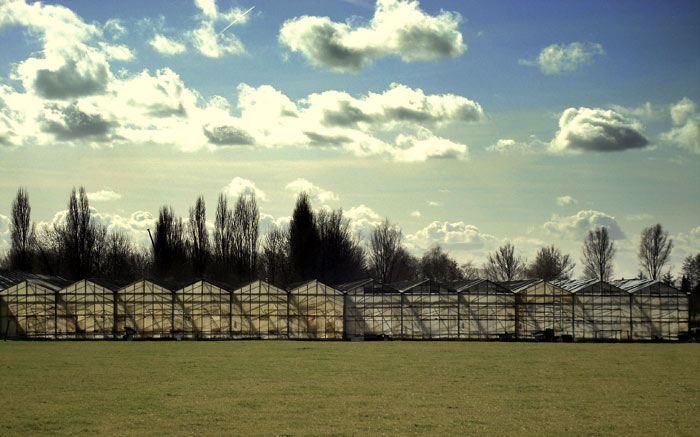ARTIKEL
OBOR opportunities and challenges for the Dutch Agribusiness Sector
The Netherlands is the second largest exporter of Agriproducts in the world. However, its export volume to China is insignificant. The ‘One Belt One Road’ initiative (OBOR) provides a great opportunity to increase the volume. But this will not be achieved easily. It requires a vision and collective action.
OBOR
‘One Belt One Road’ (OBOR) was an initiative launched by President Xi Jinping in 2013. ‘One Belt’ refers to the Silk Road Economic Belt which includes a number of economic land-based corridors connecting China with central Asia and all the way to Europe. ‘One Road’ refers to the 21st-Century Maritime Silk Road which runs west from China’s east coast to Europe through the South China Sea, the South Pacific Ocean, and the Indian Ocean area.
CHINA RAILWAY Express
As part of this OBOR initiative, 39 Eurasian railway lines are operating from various Chinese cities to Europe. More than 2,000 freight trains have made their return journey so far along the Silk Road Economic Belt.[1] The most influential routes are from inland cities such as Chongqing, Wuhan and Chengdu to destinations as far as Duisburg, Hamburg, and Madrid in Europe. Recently, the National Development and Reform Commission (NDRC) has united all above rail lines under one brand name CHINA RAILWAY Express (CR Express) to reinforce its market position.[2] Westbound cargoes contain mainly IT products and other consumer goods while less than half of these containers make their journey back eastwards due to lack of requirement.
Dutch agrifood export position
According to the Statistics Netherlands (CBS), the Netherlands is the second largest agriproducts exporter in the world after the United States, and followed by Germany, Brazil and France. In 2015, the Dutch exported more than 81.3 billion euro worth of agriproducts.[3] If agriculture-related products like agricultural machinery and fertilisers are included, the total export value reached nearly 90 billion (bn) euro, i.e. 21 per cent of the total value of Dutch exports. The most exported agricultural products are flowers and plants, followed by meat, dairy produce and vegetables.

© Flickr / Moser’s Maroon
‘The Netherlands is the second largest agriproducts exporter in the world after the United States’.
Despite the Chinese government’s effort in applying domestic support policy to stimulate agricultural production in order to ensure the country’s food security, China’s import for agricultural products has surged during the last decade.[4] In 2014, China imported 111 bn euro of agriproducts, rising from the 85 bn euro in 2011. However, less than 1% of China’s import came from the Netherlands. The United States, Brazil, Thailand and Australia are the leading exporting countries to China, while the Netherlands ranks at number 17. The most significant exports from the Netherlands to China are the preparations of cereals (382 million euro, yeast, etc.), flowers & plants (68 million euro), and milk (80 million euro).[5]
Opportunities
The reason for the small share of the cake the Netherlands can gain from the increasing value of China’s agri product import might be explained partly by the perishable characteristics of the Dutch export category. The CR Express will shorten the current lead time via the ocean from 6 weeks to less than 12 days.[6] This might open a total new channel for the export of Dutch agriproducts to China. Furthermore, Dutch agriproducts have a strong positive marketing image amongst Chinese consumers. They have a high demand for Dutch agriproducts such as pears, cherry tomatoes, veal, sweet pepper, flower bulbs, cut flowers, not to mention the Chinese preference for Dutch dairy produces (LEI report).
Dutch agriproducts as the ‘basic products’ for eastbound CR Express trains
The supply chain of agriproducts requires well-functioning cooling logistics. Although the Netherlands has a highly regarded Rotterdam hub,[7] the exporting of Dutch agriproducts via the CR Express will challenge the connectivity of various Greenports in the Netherlands. These will include cold-storage facilities, reefer containers and intermodal connections. The innovation and knowledge generated during this process could be adopted and disseminated in the destination terminals in China as well as along the OBOR routes. Similarly to the IC products serving as the basic products for westbound trains, we should challenge ourselves to think big: Dutch agriproducts can be the ‘basic products’ for the eastbound CR Express!
Challenges
For reasons of national secury, the former Soviet Union built a wider gauge system so that trains from Berlin could not drive straight in. Hence CR Express needs to change gauges twice: by entering into and by leaving the Common Independent States (CIS). Apart from the difference in gauge width, the three sectors (European Union, CIS and China) are operating differently as regards railway platform length and wagon length (see Table 1).
The CR Express will shorten the current lead time via the ocean from six weeks to less than twelve days
Technically speaking, CR Express efficiency may be improved by accelerating or ultimately even harmonising the configuration of three sectional railway systems between Europe, CIS and China. As said, the three sectors are operating differently with gauge width, platform length and wagon length. At this moment, ten hours are required for gauge exchanges. It is desirable to reduce the switch time to six hours by adopting innovative technology.
In addition, transport is hampered as it has to cross Russia, and Russia’s counter-sanctions concerning the import ban of EU meat, milk/dairy, vegetables and fruits still remain in place. While the Sino-European Secure Smart Trade Line (SSTL) Pilot Program is a first step to smooth clear customs clearance, it remains a long way from perfection.

© Flickr / Christopher A. Dominic
‘As part of the OBOR initiative, 39 Eurasian railway lines are operating from various Chinese cities to Europe.’
These challenges are far beyond the capacity of individual companies. Particularly the Dutch agri products sectors (more so in horticulture) are dominated by SMEs. The private sector is expressing clear interests in this new export channel via OBOR and would like to be kept informed of the latest developments. As far as commitment is concerned, however, the SMEs prefer to wait and see others taking action first; they will jump on the train when it is leaving the station.
| Three Sections | Distance | Gauge width | Platform length | Wagon length |
|---|---|---|---|---|
| Europe | 1,300 km | 1.435 mm | 450/650 m | 90ft |
| Customs transfer/ Exchange of gauge | ||||
| CIS | 5,496 km | 1.520 mm | 1,050 m | 90ft |
| Customs transfer/ Exchange of gauge | ||||
| China | 3,777 km | 1.435 mm | 1,050 m | 60ft |
© Comtrade, 2016
Table 1. Three train configuration systems along the OROB routes.
Competition
At the national level, more than 30 MoUs (Memoranda of Understanding) have been signed to partner with China on various opportunities along the OBOR routes. Within Europe, Germany and Eastern European countries are the most active ones. Duisburg, Hamburg and Madrid are already in the picture along the CR Express.
Several countries have established strong country images among several product categories in China’s top tier cities. Chinese consumers are increasingly familiar with high-quality fresh meat from Australia and are ready to pay for the premium prices.[8] The Southern Hemisphere climate allows Chile fruits to capture the golden opportunities during the annual Chinese New Year seasons when purchasing is at the premium.
While the Chinese middle classes are eager to taste Western agriproducts, China is exploring the opportunities to export as well. Whereas Russia is hindering the EU agriproducts exporting to China via CR Express, this August 2016 the first chilled CR Express from China packed with pears and pomelos arrived in Moscow.[9]
Collective Action and Vision Required
OBOR is a grand concept and begs for a counter-strategy as a EU level response.[10] As the second largest agrifood exporter, the Netherlands require a vision to foresee future market trends and to act accordingly. Declarations such as “The Dutch agriproducts will be the basic products for eastbound CR Express” and “Rotterdam will be the hot spot for OBOR cool logistics in Europe” will bring clear messages to the Chinese government and give a positive response to the OBOR initiative.
The oversupply of Dutch agriproducts has deteriorated the price performance during recent years. The CR Express offers a unique opportunity to enter the hungry Chinese markets. However, no invisible hand automatically does this job. The Dutch government’s commitment and coordination are needed in the take-off phase to provide required services since several ministries (Economic Affairs, Foreign Affairs, Infrastructure and the Environment) are involved.
This is particularly required since individual companies are reluctant and perhaps too small to make the necessary initial investments. Even in the most liberal term, a strong public-private partnership is needed. This directly calls upon the collaborations between several Top Sectors such as Agri&food, Horticulture, Logistics, Energy, etc. When all players join forces, an enormous market can be served, to the benefit of Chinese consumers, and to the benefit of the Dutch economy.

